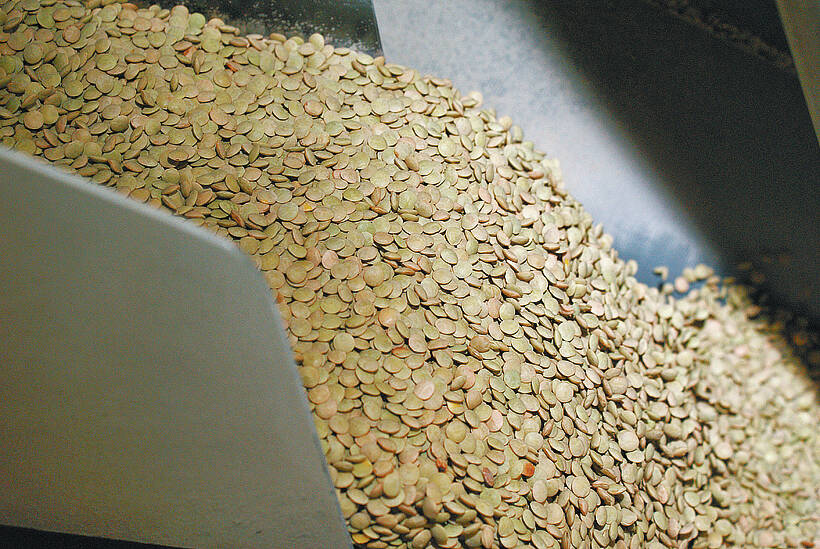In the race between crops and weeds, it is the jump out of the starting blocks that usually tells the tale at the finish line.
“First one up wins, pure and simple,” said Ken Sapsford, with the Saskatchewan Soil Conservation Association.
Sapsford and Agriculture Canada scientist Neil Harker told several hundred farmers at an event put on by Flexi-Coil Jan. 27 that their efforts to get the seed germinated, emerged and established ahead of the weeds will pay far more than anything they do later in the crop’s life.
Read Also

Green lentil market oversupplied
Farmers in Western Canada can expect price pressure on their new crop of green lentils, as the available supplies among the world’s major lentil-growing nations increase significantly.
To drive home his point, Sapsford showed slides of test plots at the Agriculture Canada research farm at Scott, Sask. The pictures showed plots seeded to canola, a relatively weak competitor, and barley, a strong competitor.
Where the barley was seeded before or at the same time as the canola, it crowded out the oilseed, but where canola went in the ground first, it pushed out most of the barley.
There are many factors that position a crop to get a good start in life, including proper fertilizer placement, stubble and straw management and seeding depth.
But one of the best things farmers can do is get rid of weeds before they start to rob the crop of yield, said Harker.
The goal of applying herbicides should not be a pretty, weed-free field before harvest. It is more important to time applications so they have the biggest impact on yield.
And in the context of post-emergence spraying, the rule is the earlier the better.
“Five weeds at emergence with the crop are more dangerous than 100 that emerge two weeks later,” said Harker, of the Agriculture Canada Research Centre at Lacombe, Alta.
“I want to convince you that early post-emergence (spraying) makes you the best profit.”
A series of plot and field scale experiments have shown that controlling weeds within two weeks of the crop’s emergence preserve far more of the best potential yield than later spraying, he said.
Busy seeding
He admitted that farmers often aren’t thinking about weed control as early as they should because they are usually on the tractor, still seeding other crops. They might have to hire someone to spray.
Also, herbicide manufacturers promote the benefits of their products by giving farmers the option of later spraying.
But by the third week after crop emergence, weeds are taking a bite out of yield, he said. He added that spraying late is better than not spraying at all. He did imply farmers should limit themselves to one herbicide application.
Pre- or post-harvest applications of glyphosate can provide early weed control, he said. There is also a place for pre-emergent herbicides.
Harker was asked by a farmer about the long-term impact of killing the weeds that come up with the crop but not worrying about late-weed flushes.
The scientist said more long-term work needs to be done on weed removal timing. But he said if late weed flushes are going to be a problem at harvest, clogging the combine or adding to dockage, then they should be controlled.
He added that young weeds are more susceptible to herbicides and in early applications it might be possible to reduce chemical rates.
Sapsford also said soil packing during seeding can affect weeds.
In a low soil disturbance system, weeds outside the seed rows are not disturbed and tend not to germinate. In systems that disturb the seed bed, the packer wheels should be adjusted so they pack only the seed row.














